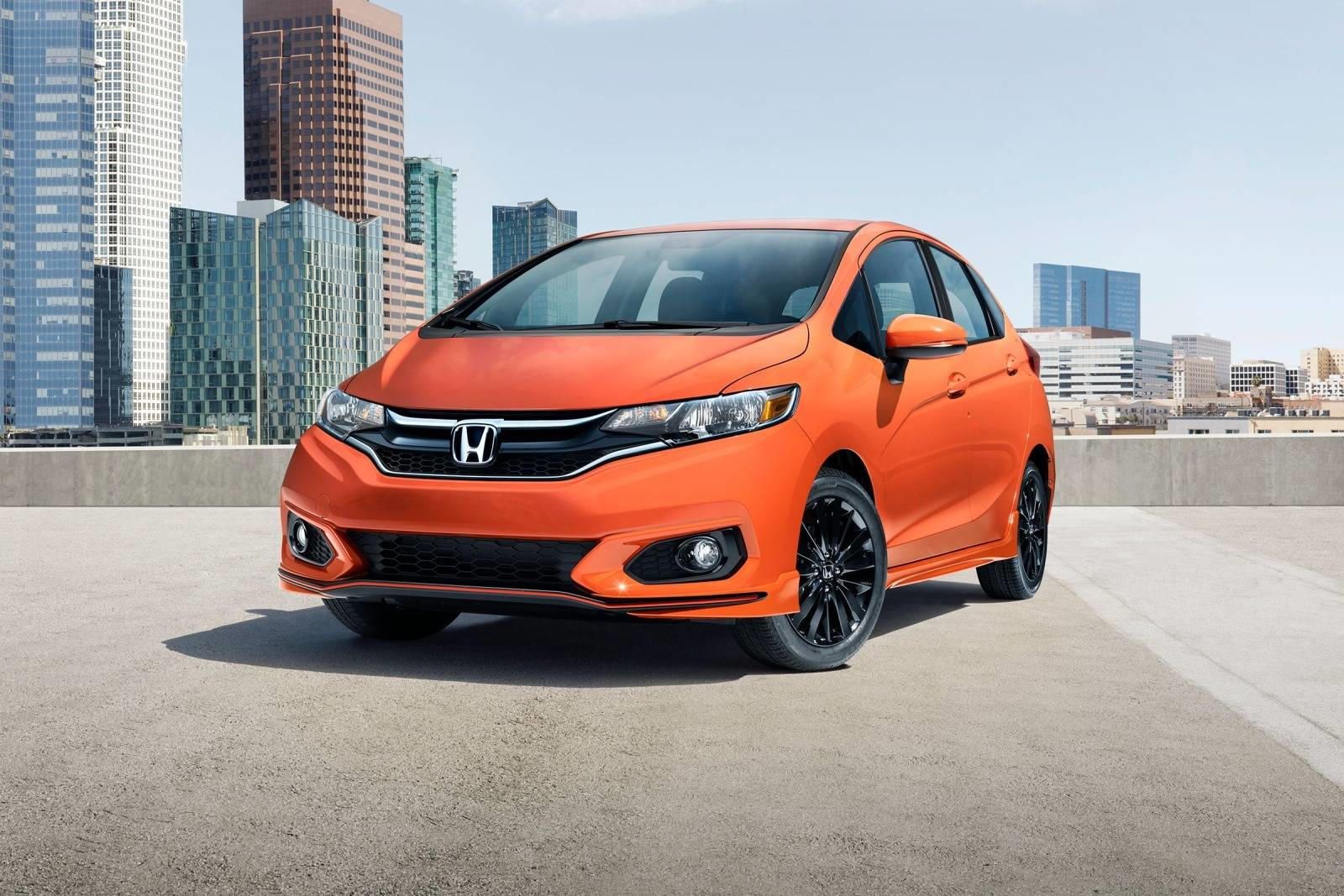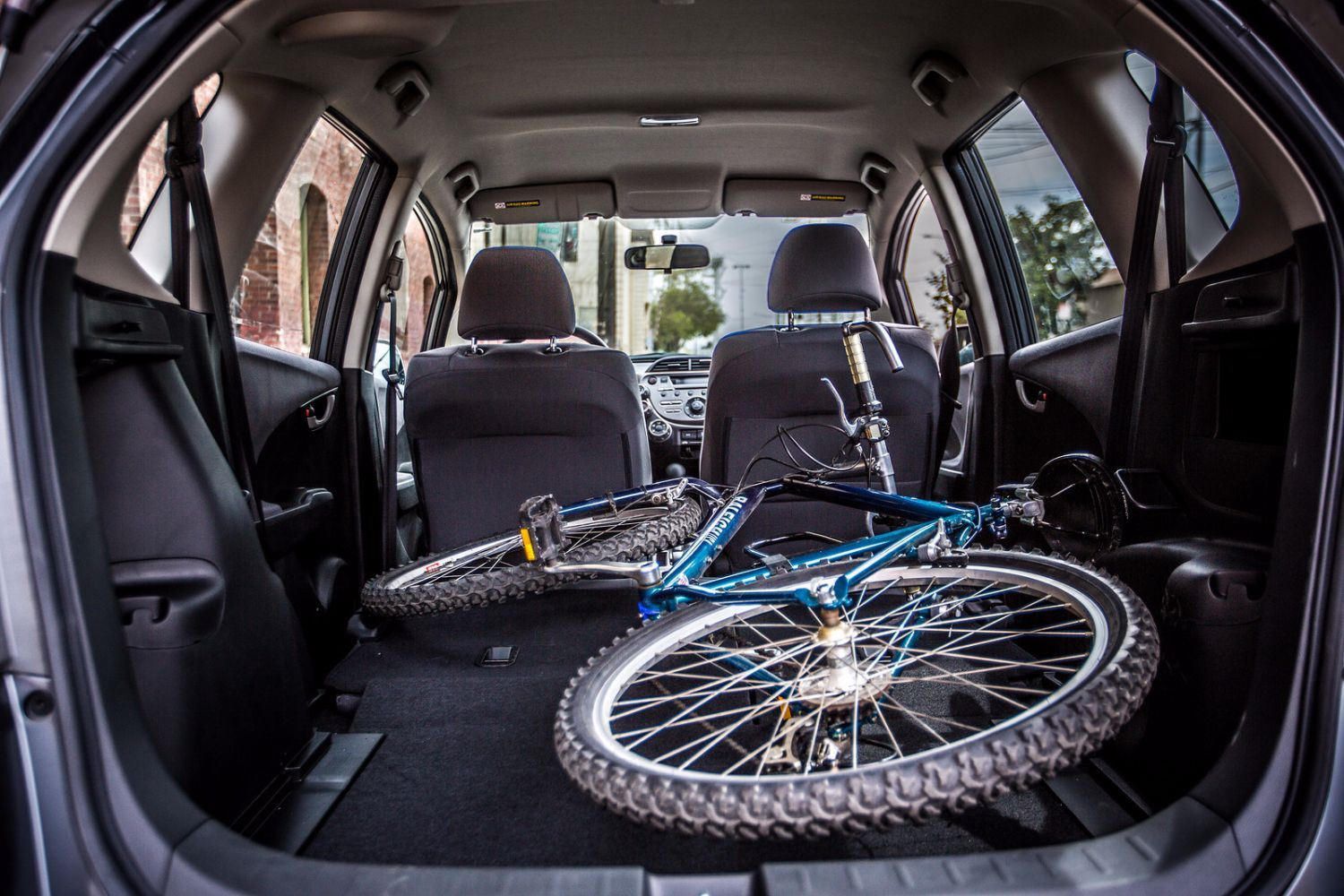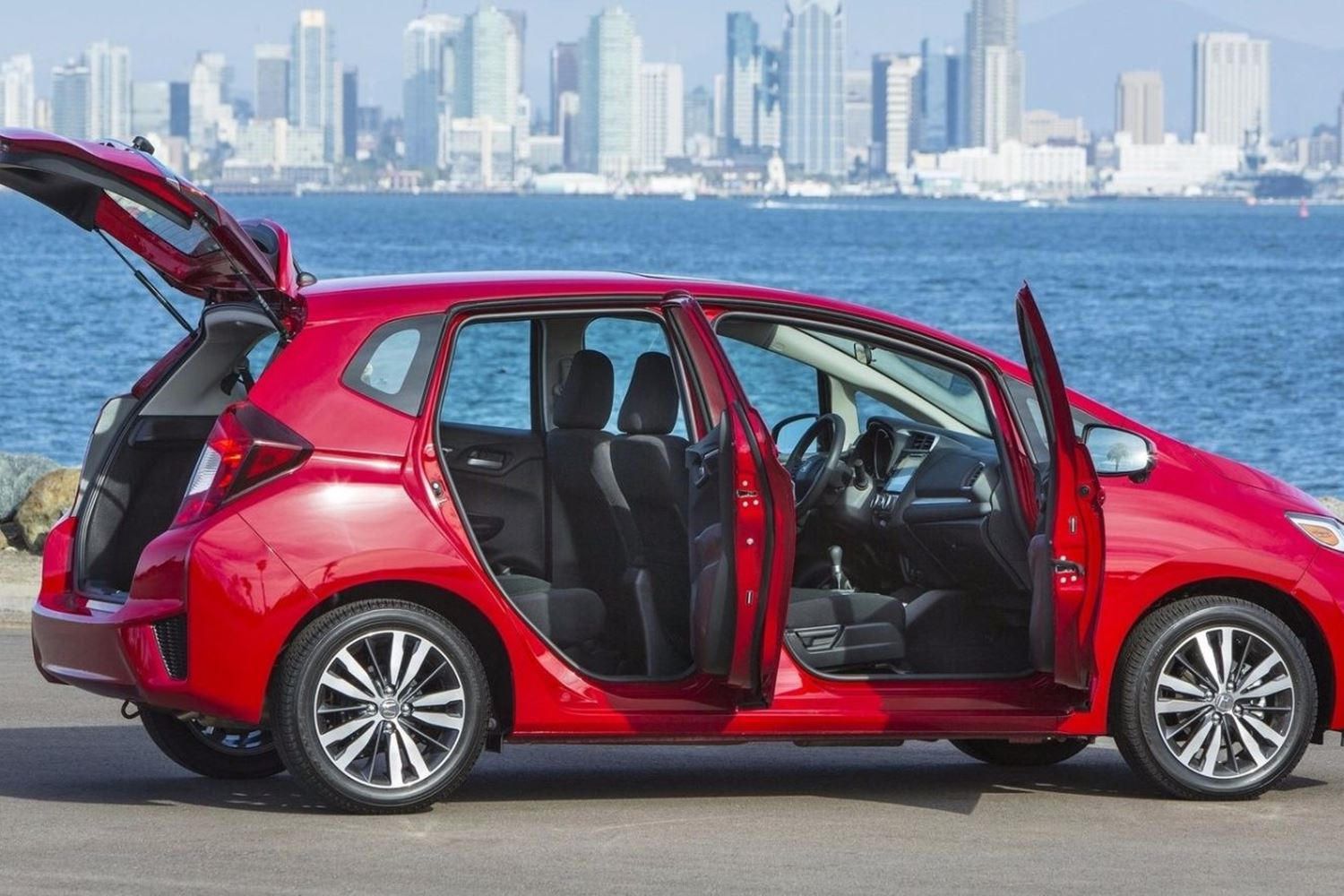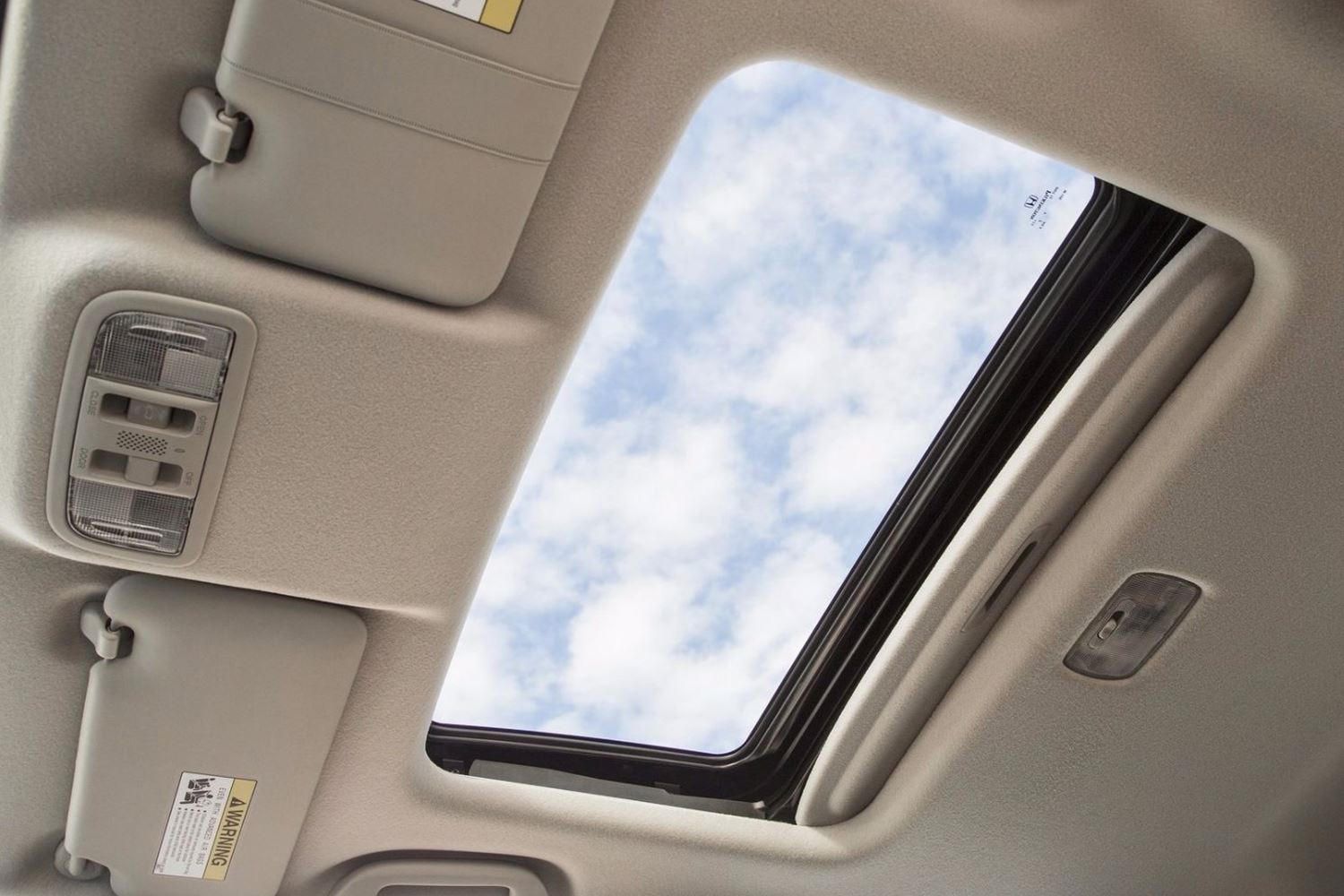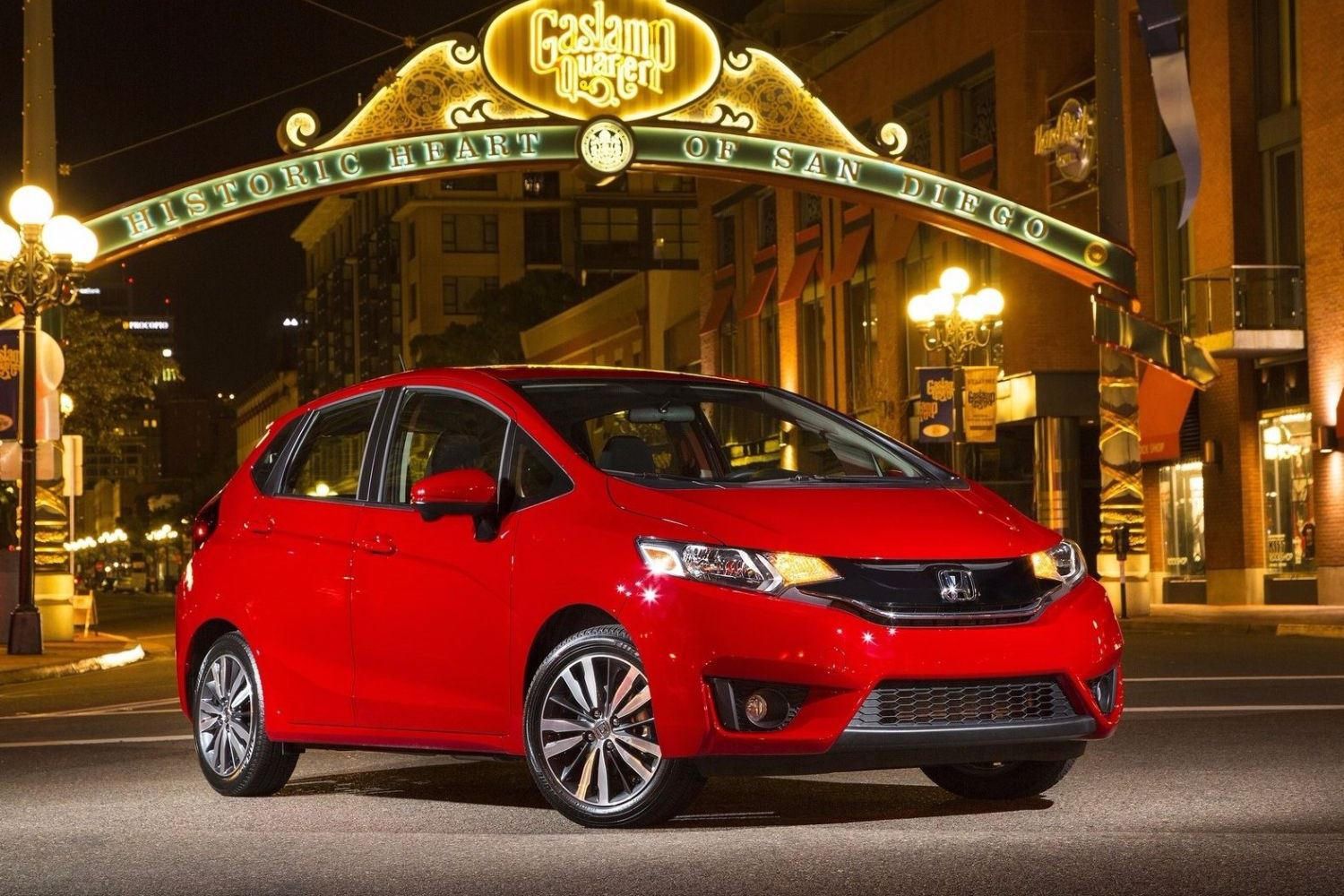Everything you need to know
Lots of car market segments are described as competitive nowadays, but one very tightly-fought area that many tend to overlook is the sub-compact market. For sure, it's not the most exciting sector, but there's no denying this division contains many quality cars. The Ford Fiesta, for instance, remains a truly great car after all these years, whereas the Kia Rio, Hyundai Accent and Chevrolet Sonic all offer very enticing alternatives if Blue Oval-badged cars aren't your thing. We feel, though, that the sub-compact that does enough to stand out is the Honda Fit. For sure, the fact it's a newer entry on the market does mean the Honda has a slight advantage over its older competition, but there's no denying that – as of right now – the Honda Fit is a rather enticing and exceptionally well-rounded package.
How can such a small car be this spacious?
The relative absence of curves and tapering rooflines does wonders for the Honda Fit's practicality levels.
We know styling cohesiveness is a subjective thing, but we can see why some might not be a fan of the boxy nature of the Honda Fit's bodywork. Though we personally wouldn't describe it as 'ugly', there is a case to be made that the Ford Fiesta and Kia Rio outpace the Honda in the aesthetics stakes. However, the relative absence of curves and tapering rooflines does wonders for the Honda Fit's practicality levels. Space up front is rather excellent for such a small vehicle, and head and legroom in the back seats is also quite impressive for the vehicle's size. For sure, it's no luxury limo, but there's more than enough volume here to comfortably accommodate passengers on longer journeys. Storage cubbies are also as plentiful as they are sizeable, with 1 liter bottles of water easily being swallowed up in the door bins. We're also quite impressed with some of the subtler touches, like the cup holder which folds out of the dashboard. Likewise, the glovebox and center armrest compartment are also of a decent volume.
For sure, a car with a base price of $16,000 was never going to blow us away, but nevertheless the build quality is to a good standard.
It's the versatility of the Honda Fit's cargo capacity, though, which really piques our interest. On top of being quite sizeable (with all seats in place, the Fit's trunk has 16.6 cubic feet of room – nearly two cubic feet more than a Chevrolet Sonic), the trunk hatch opening is exceptionally broad. Factor in the low load lip, and the Honda Fit impresses even before you consider the 'Magic Seat' system. On top of allowing the rear seat backs to be folded down completely flat (resulting in an increase in the trunk volume to a very impressive 52.7 cubic feet, but it also allows the rear seat bases to be folded upwards if needed – meaning taller items can be slotted into the rear passenger compartment if need be. It's a small touch, but one we feel elevates the Honda Fit's practicality levels to a level its rivals can't quite match. Given we've already lavished so much praise on the Honda Fit, it's perhaps no surprise to learn we're fans of the overall fit-and-finish, too. For sure, a car with a base price of $16,000 was never going to blow us away, but nevertheless the build quality is to a good standard, thanks in part to the abundance of soft-touch plastics, and the overall intuitiveness of a majority of the controls is equally reassuring. The only downside, in fact, is the standard-fit touchscreen infotainment system, which is a bit sluggish and imprecise for our liking.
A hoot to drive in town. Not so much on the highway
The Honda Fit fits should be ideally suited to life in the city.
Sub-compact vehicles are great to drive around built-up areas in, and the Honda Fit is no exception. Though we would hold back on calling it "fun", we do concede the small Honda to be a perky and responsive little runabout to filter through traffic-infested streets. All-round visibility, for instance, is pretty good – thanks in part to the fact you sit surprisingly high up for a sub-compact. Factor in the tighter turning circle, the decent-sized glasshouse and the light, responsive steering, and the Honda Fit fits should be ideally suited to life in the city.
The Honda Fit does suffer a fair bit from noise and wind noise.
Take the Honda Fit beyond the built-up realm, though, and things do start to fall apart a bit. Whilst the current Fit is miles ahead of the old one in terms of body control, we do feel the Honda does bounce a bit over bumps at higher speeds, and doesn't feel as composed as a Ford Fiesta. The Fiesta trumps that bit better when it comes to driving dynamics, too – in comparison with the Ford, the Honda Fit isn't quite as direct or as responsive. It's not horrible, but we wouldn't call it especially fun either. Perhaps the big drawback regarding the Honda Fit, though, are the refinement levels. Possibly brought about by the boxy shape that makes it so practical, the Honda Fit does suffer a fair bit from noise and wind noise. Though this may be expected from a vehicle at this price point, the fact we're pointing it out as being a tad excessive by class standards means you should prepare for a fairly noisy journey if you ever take the Honda Fit out on longer journeys or out on open stretches of road like highways.
The manual works best with the sole engine option
The outputs of 130-hp aren't breath-taking, they are enough to lend this small a car.
Sub-compact car buyers who don't really give a hoot about what powers their car will be pleased to know that Honda's only offering the Fit at the moment with one engine option: a 1.5-liter four-cylinder gasoline engine. Even better, the engine's quite a good one as well. Though the outputs of 130-hp and 114 lb-ft aren't breath-taking, they are enough to lend this small a car a decent turn of speed. Granted, on the more open stretches of road we mentioned earlier, you will need to work it hard in order to get it up to speed (which isn't something you can say to the same extent about a 1.0-liter turbocharged Ford Fiesta), but the outputs are more than fine for pootling about traffic in.
The Honda Fit's also quite the refined and smooth unit.
When you're not using up all of the revs, the Honda Fit's also quite the refined and smooth unit. If we're being picky, we'd say the abundance or turbocharged powertrains in rival cars has spoilt us a bit with the broader torque spreads they provide, but the gasoline engine in the Honda Fit is still a handy enough tool that gets the job done admirably. A shame, then, that fuel economy levels aren't top-of-the-class. Granted, the Honda Fit is still a fairly frugal vehicle by sub-compact standards (even the least efficient Honda Fit can return 29mpg in the city and 36mpg on the highway), but said figures aren't much better than the Kia Rio's 27/36mpg figures, or the aforementioned 1.0-liter Ford Fiesta's 31/43mpg. Things do improve if you ditch the standard-fit manual transmission with the optional CVT automatic, but we wouldn't suggest you instantly favour the automatic option. For sure, depending on what model you go for, economy levels do creep up by a couple of miles per gallon, but we feel the manual is a better fit for the gasoline engine's character. Plus, as we'll discuss shortly, paying another $800 for the CVT isn't something you'd want to consider if you're after a bargain of sorts.
Good equipment levels help offset higher pricing
It's worth pointing out that quite a few sub-compact cars are cheaper to buy initially.
At face value and in isolation, $15,900 for a Honda Fit isn't too bad. When a vehicle's as spacious, well-built and as decently efficient as the Honda, a hundred bucks shy of 16 grand does seem to be an alright price. However, it's worth pointing out that quite a few sub-compact cars are cheaper to buy initially. A base Kia Rio, for instance, starts out at a whisker over $15,000, with the Toyota Yaris, Ford Fiesta and Nissan Versa Note retailing for another $500 or so more. You do at least get a decent amount of equipment as standard on the base cars. Entry level 'LX' cars get a reversing camera, a 5inch touchscreen interface, cruise control, air-conditioning, keyless entry, power windows, superbly bolstered and supporting front cloth seats, hill start assist, front side and curtain airbags and automatic headlights as standard – which does help alleviate the sting of the nigh-on $16,000 price tag.
There is a flagship 'EX-L' trim, but we don't really think it's worth the extra money.
Perhaps the sweet spot of the Honda Fit range, though, is the 'EX' trim. Admittedly, it does become even pricier at $17,900, but you do at least get 16inch alloy wheels, a powered sunroof, a larger 7inch touchscreen interface and – perhaps most handily Honda's LaneWatch system that, via a camera feed that's displayed on the aforementioned touchscreen, gives the driver a clear view of the surrounding area on the right-hand side of the car. There is a flagship 'EX-L' trim, but we don't really think it's worth the extra money. For sure, the pleasantries it does feature are nice to have (with the highlights being all-round leather upholstery and heated front seats), but we're not sure they're worth spending $20,000+ on a Honda Fit for. Plus, you'll need to spend another $1,000 just to have built-in navigation. Warranty-wise, the Honda Fit does a decent job with its three-years/36,000-miles bumper-to-bumper and five-years/60,000-miles powertrain schemes. However, whilst they are okay by class standards, they do pale in comparison with the five-years/60,000-miles bumper-to-bumper and 10-years/10,000-miles powertrain warranties that are available on the Hyundai Accent and Kia Rio.

